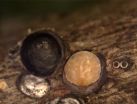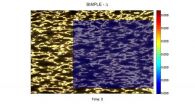(Press-News.org) Researchers from North Carolina State University have found that century-old museum specimens hold clues to how global climate change will affect a common insect pest that can weaken and kill trees – and the news is not good.
"Recent studies found that scale insect populations increase on oak and maple trees in warmer urban areas, which raises the possibility that these pests may also increase with global warming," says Dr. Elsa Youngsteadt, a research associate at NC State and lead author of a paper on the work.
"More scale insects would be a problem, since scales can weaken or kill the trees they live on," Youngsteadt says. "But cities are unique, so we wanted to know whether warming causes scale insect population explosions in rural forests, the way it does in cities."
To address that question, Youngsteadt examined more than 300 museum specimens of red maple branches collected between 1895 and 2011 in rural areas of North Carolina, South Carolina and Georgia. By evaluating the scale insect remains attached to each specimen, Youngsteadt estimated scale population density and compared it to the average August temperature for the year and place where the specimen was collected. Youngsteadt then compared the findings from the historical specimens with more recent data from urban Raleigh, North Carolina.
"Scale insect density in rural areas was not as high as it was in the city, but there was a common pattern," Youngsteadt says. "Scale insects were most likely to be present on specimens collected during warm historical time periods, and scales were most abundant when temperatures were similar to modern, urban Raleigh."
Given the shared urban and historical pattern, the researchers also predicted that scale insects would be more abundant in rural forests today than in the past, as a result of recent climate warming. To test this prediction, Youngsteadt went to 20 sites where historical specimens were collected from 1970 to 1997 and sampled their modern scale insect populations.
"Sure enough, scale abundance had increased at 16 of the 20 sites," Youngsteadt says. "Overall, we found a total of about five times more scale insects in 2013 than on the historical specimens from the same locations.
"The urban and historical data are so well-aligned that we can view scale insect populations in cities as a preview of what to expect elsewhere," Youngsteadt adds. "It also suggests that we should begin looking at cities for clues to how other insect species will respond to higher global temperatures."
The paper, "Do cities simulate climate change? A comparison of herbivore response to urban and global warming," is published in the journal Global Change Biology. Co-authors include Adam Dale, Dr. Rob Dunn and Dr. Steve Frank of NC State, and Dr. Adam Terando of the U.S. Geological Survey and NC State.
The results are consistent with other recent studies from Frank's lab, which showed that two species of scale insects infesting maple and oak benefit from urban warming. The new study suggests that these urban studies have broader relevance not just to cities but also to global warming in rural areas.
INFORMATION:
The work was supported by USGS via the Department of Interior's Southeast Climate Science Center, which is based at NC State and provides scientific information to help natural resource managers respond effectively to climate change. The research was also supported by the U.S. Department of Agriculture's National Institute of Food and Agriculture under grant 2013-02476, and by the National Science Foundation under grants 0953390 and 1318655.
Museum specimens, modern cities show how an insect pest will respond to climate change
2014-08-27
ELSE PRESS RELEASES FROM THIS DATE:
What lit up the universe?
2014-08-27
New research from UCL shows we will soon uncover the origin of the ultraviolet light that bathes the cosmos, helping scientists understand how galaxies were built.
The study published today in The Astrophysical Journal Letters by UCL cosmologists Dr Andrew Pontzen and Dr Hiranya Peiris (both UCL Physics & Astronomy), together with collaborators at Princeton and Barcelona Universities, shows how forthcoming astronomical surveys will reveal what lit up the cosmos.
"Which produces more light? A country's biggest cities or its many tiny towns?" asked Dr Pontzen, lead author ...
Sheepdogs use simple rules to herd sheep
2014-08-27
Sheepdogs use just two simple rules to round up large herds of sheep, scientists have discovered.
The findings could lead to the development of robots that can gather and herd livestock, crowd control techniques, or new methods to clean up the environment.
For the first time scientists used GPS technology to understand how sheepdogs do their jobs so well. Until now, they had no idea how the dogs manage to get so many unwilling sheep to move in the same direction.
NERC fellow, Dr Andrew King of Swansea University, fitted a flock of sheep and a sheepdog with backpacks ...
Everest expedition provides first evidence of effects of altitude on blood pressure
2014-08-27
An expedition to Mount Everest by Italian researchers has shown for the first time that blood pressure monitored over a 24-hour period rises progressively as people climb to higher altitudes. The researchers also found that while a drug used for lowering blood pressure, called telmisartan, was effective in counteracting the effects of altitude up to 3400 metres, it was not effective at 5400 metres above sea level – the height of the Everest base camp.
The study is published online today (Wednesday) in the European Heart Journal [1], and its findings have implications ...
Animals first flex their muscles
2014-08-27
An unusual new fossil discovery of one of the earliest animals on earth may also provide the oldest evidence of muscle tissue – the bundles of cells that make movement in animals possible.
The fossil, dating from 560 million years ago, was discovered in Newfoundland, Canada. On the basis of its four-fold symmetry, morphological characteristics, and what appear to be some of the earliest impressions of muscular tissue, researchers from the University of Cambridge, in collaboration with the University of Oxford and the Memorial University of Newfoundland, have interpreted ...
Sleep apnea treatment is effective for older people
2014-08-27
Continuous positive airway pressure is effective at treating sleep apnoea in older people, a new study has found.
Obstructive sleep apnoea (OSA) is a condition where the walls of the throat relax and narrow during sleep, interrupting normal breathing and causing profound sleepiness. For people with moderate or severe OSA, doctors usually recommend using a continuous positive airway pressure (CPAP) device, which consists of a small pump that delivers pressurised air into the nose through a mask, stopping the throat from closing.
Previous studies have established the ...
New scientific review investigates potential influences on recent UK winter floods
2014-08-27
A comprehensive review of all potential factors behind the 2013/2014 UK winter floods is published today in the journal Nature Climate Change. The paper does not definitively answer whether human activity played a role in the magnitude of the winter flood events. It does, though, examine how factors such as the state of the global oceans may have interacted with wind patterns and subsequent high-level atmospheric features.
The review was led by scientists at the Centre for Ecology & Hydrology, in collaboration with the Met Office and the Universities of Oxford, Exeter ...
Social inequalities in salt consumption remain
2014-08-27
People from low socio-economic positions in Britain still eat more salt than those from higher socio-economic positions, irrespective of where they live.
A paper published in the BMJ Open journal and led by Warwick Medical School suggests social inequalities in salt intake have hardly changed in the period from 2000-01 to 2011. This is despite a national average salt reduction over this time.
This paper is the first to monitor social inequalities following the national salt reduction programme.
The research was carried out by the World Health Organization Collaborating ...
New technology may identify tiny strains in body tissues before injuries occur
2014-08-27
VIDEO:
As a piece of plastic wrap is stretched, the new algorithms identify the location (in red) where it is weakening, which is where the material eventually breaks.
Click here for more information.
Researchers at Washington University in St. Louis have developed algorithms to identify weak spots in tendons, muscles and bones prone to tearing or breaking. The technology, which needs to be refined before it is used in patients, one day may help pinpoint minor strains and tiny ...
New estrogen-based compound suppresses binge-like eating behavior in female mice
2014-08-27
HOUSTON – (Aug. 26, 2014) – Binge eating, an eating disorder in which a person frequently consumes unusually large amounts of food in a short period of time, affects about 5 to 10 percent of U.S. adults and is more common in women than men. Researchers at the USDA/ARS Children's Nutrition Research Center at Baylor College of Medicine and Texas Children's Hospital found that the hormone estrogen can specifically trigger brain serotonin neurons to inhibit binge eating in female mice in a report today in the Journal of Clinical Investigation.
"Previous data has shown that ...
Researchers discover fever's origin
2014-08-27
Fever is a response to inflammation, and is triggered by an onset of the signaling substance prostaglandin. Researchers at Linköping University in Sweden can now see precisely where these substances are produced – a discovery that paves the way for smarter drugs.
When you take an aspirin, all production of prostaglandins in the body is suppressed. All symptoms of inflammation are eased simultaneously, including fever, pain and loss of appetite. But it might not always be desirable to get rid of all symptoms – there is a reason why they appear.
"Perhaps you want to inhibit ...





